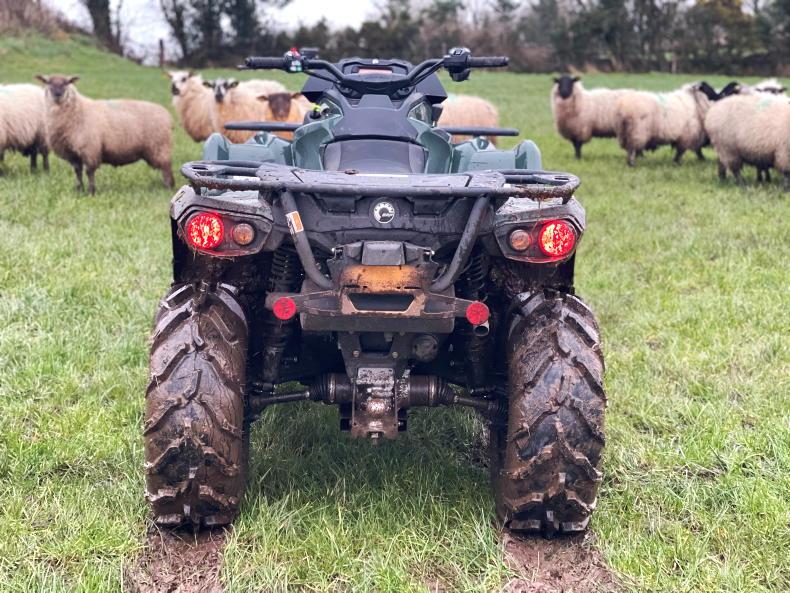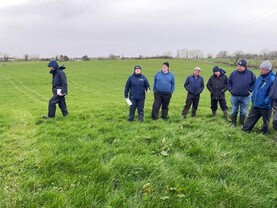Quad bike / ATV rules
New regulations governing the safe use of all-terrain vehicles (ATV)/quad bikes in all workplaces, including agriculture, came in to law on Monday 20 November.
The new rules require all drivers of ATV/quad bikes to wear a helmet (generally prescribed standard) and complete training with a registered training provider.
The training must be completed to QQI standard or equivalent. The Health and Safety Authority advises that the duration of the course will generally be one day for experienced operators and two days for new entrants, with a period of practice between two-day training courses.
It advises the ratio of trainer to trainee should be no more than 1:4 persons. Those completing training must be aged 16 or over and wear appropriate head protection and other PPE.
Housing prep
Grass supplies have diminished, sohousing of ewes is now looming for many highly stocked enterprises. There are a number of tasks that can be completed pre-housing to facilitate an easier transition to an indoor environment.
It is much more difficult to get on top of a lameness issue once sheep are housed, with the added risk of disease spreading rapidly if it is not controlled at the outset.
It is best to address any lameness issues in advance of housing or, where lame sheep do have to be housed, then batching such animals together to allow for targeted treatment will help.
Regular footbathing will address scalds, some of which may be related to continuous wet underfoot conditions, while targeted treatment including administering antibiotics will generally be required to get on top of cases of footrot.
If you haven’t already, washing and disinfecting sheds pre-housing, will help to eliminate any reservoir or build-up of bacteria. The longer the period between washing/disinfecting and housing the better.
All water troughs should be emptied and checks carried out to ensure ballcocks are moving freely.
It is also worth considering if any changes need to be made to improve ventilation and cut down on any potential sources of moisture entering the shed – e.g. condensation and leaking gutters.
This is especially important given the current tightness in straw supplies.
Silage quality
Reports indicate there is massive variation in silage quality, with dry matter digestibility and dry matter of particular concern. Recent weather has been hard on sheep and it is important that feeding programmes are sufficient to meet nutritional demand and safeguard body condition.
For ewes in mid-pregnancy, access to moderate-quality silage (67 to 70 DMD) will generally be sufficient to maintain body condition, with ewes requiring at least 5kg freshweight at 20% dry matter.
Intake will be significantly higher with top-quality and chopped silage, and such silage should be targeted to late pregnancy to reduce the volume of supplementary concentrate feeding.
If silage quality is poorer than that listed above, then it is important to identify this early so that supplementation can be introduced when required.
Clean livestock policy
This week’s reprieve in weather is highly welcomed. Reports of lambs falling into Category C have lessened, but there are still significant issues reported.
A large percentage of these continue to be linked with lambs presented with wet and heavily soiled fleeces. If an opportunity can be taken while weather allows to draft lambs or house lambs which are borderline Category B in advance of slaughtering it will pay dividends.






 This is a subscriber-only article
This is a subscriber-only article










SHARING OPTIONS: